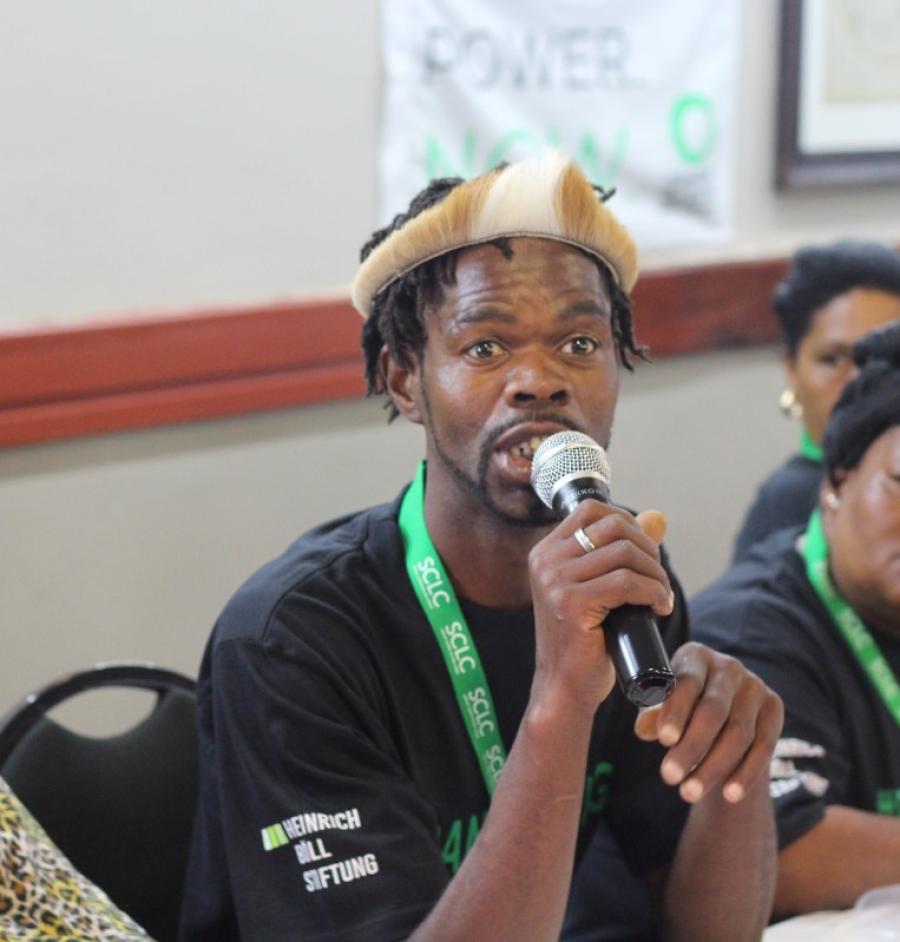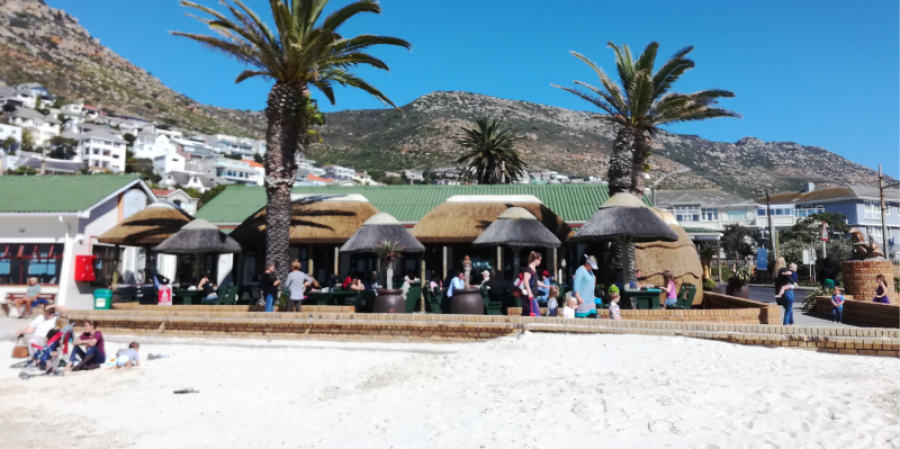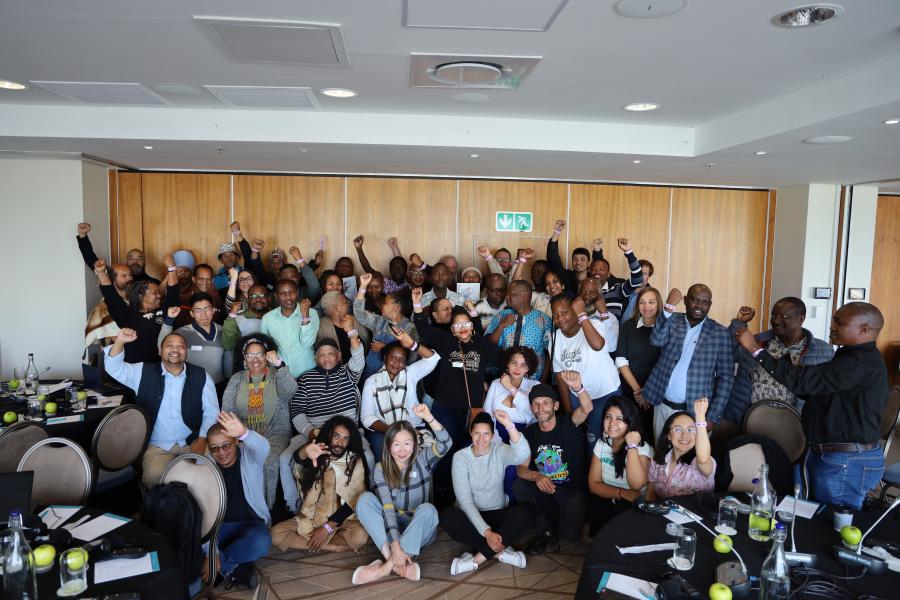At Frederic Jameson's recent conference in North Carolina on globalization and culture, speaker after speaker proclaimed the slow but inevitable demise of the nation-state, the intrinsically reactionary nature of nationalism, and the inexorable spread of transnationalism, global capitalism and cultural homogenization. After sitting through mostly Western-based scholars' accounts of the "hyper modern condition," Nawaal Sadaawi, an acclaimed Egyptian scholar and novelist, declared that she could no longer restrain her anger and indignation. In an eloquent and emotive address to the conference, Sadaawi declared herself to be committed to a "progressive nationalism" that emerged out of anti-colonial struggles, but that this did not render her uncritical of post-independence African governments, including her own. Neither did this situated nationalism - a nationalism provoked in this instance by the dominance of Western academic discourses - prevent her from rejecting chauvinistic and oppressive nationalisms and religious fundamentalisms. Like many in the audience, I, too, was moved by Sadaawi's intervention. It seems plausible that Sadaawi would have responded in a similar manner to recent writing by Western Scholars on South Africa's transition to democracy.
Western discourses on democracy continue to be imposed upon African social and political landscapes. International players from the U.S. State Department, the World Bank and the International Monetary Fund (IMF) have made aid and structural adjustment packages to African countries conditional upon democratic reform along Western lines. In the self-congratulatory euphoria and celebration of the compliance of African (and Eastern European) countries to these conditions, the limitations of these new democracies have tended to be ignored by both Western scholars and policy makers. But it is not only the State Department and bankers that have peddled their nations of democracy in Africa. Scholars, ranging from neo-Marxists to liberals and "post-modernists," seem to be equally prone to imposing their the oretical pre-occupations on African realities.
Disillusionment with the failings of Western liberal democracies in an age of transnationalism, mass consumerism and global media manipulation have led some to raise the question as to whether these "post-modern conditions" reflect African social and political realities. John Comaroff's article, "Democracy, Fried Chicken and the Anomic Bomb: A brief reflection on the 'new' South Africa," (CSQ 18:2/3) asks a similar question in his reflections on whether the new South Africa will be able to bring about effective social transformation, given transnationalism and the decline of the nation-state. Comaroff's provocative article provides the springboard for this discussion of the transition to democracy in South Africa. Fried Chicken and the New South Africa
In the contemporary global scenario sketched by Comaroff, the state is deemed "irrelevant" and impotent - as are ballot boxes, both being captive to transnational capital flows and the decisions of multinational executive directors. Big business is the master, and the slaves (post-colonial ruling elites and their subjects) are helpless and passive prey to the depredations of an inexorable process of global accumulation. This scenario sounds remarkably like a combination of Wallersteinian world systems theory and nations of capitalist conspiracy of a special kind. (Immannuel Wallerstein's The Modern World System, 1974, presents a rather functional and teleological narrative in terms of which Third World countries located at the periphery are represented as passive victims to global capitalist depredations emanating from Western or core countries.) From this perspective, Nelson Mandela's ANC-led government can only but reproduce the failings of bourgeois ruling elites of neighboring African countries. In the following I map out the reasons why I reject this scenario as a useful way to think through South Africa's transition.
Comaroff provides an interesting analysis of the transition to democracy, and raises some crucial questions concerning the impact of transnationalism, the decline of the nation-state and the limitations of the new democracies in Africa and Eastern Europe. He provides a bleak assessment and prognosis of these democracies. Yet, he holds out some hope for South Africa if it can follow an alternative route to the "fried chicken democracies" in which alienated, depoliticized and disempowered citizen desire only the "satisfaction of wants and needs," and politics is reduced to "the simultaneous calculi of self-interest and collective entitlement." Comaroff concludes, "If the transition to democracy turns out to hinge purely on the satisfaction of wants and needs, it may distill itself into a very small idea" that promises hope and gives you Kentucky Fried Chicken. Comaroff draws on experiences of democracy in industrialized countries in Europe and North America and compares these with conditions in the new South Africa. I argue that "the postmodern condition" and US-style politics are fundamentally different to the realities of South African political life. While South Africa is by no means insulated from globalization, neither is it a mere mirror of conditions of the "North." This coreperiphery imagery - where the center defines the conditions of political, cultural and economic life at the periphery - does not adequately take into account relatively autonomous processes that take place at the periphery.
To take an example from Comaroff's article, although capitalism has indeed taken root in South Africans are not nearly as depoliticized, gullible and mystified by "capitalist democracy" as Comaroff's argument would lead us to conclude. The daily strikes and boycotts in the post-election period suggests that black South Africans in particular are not fooled by "the fiction of a free market."
Soon after the country celebrated the arrival of democracy in April 1994 in a fantastically euphoric spirit, workers embarked upon nation-wide strikes in virtually every sector of the work force. Comaroff's postulation of a "historical conjuncture between the ballot box and business" produced, in the South Africa case, anything but docile workers and consumers. Instead, since the April 1994 elections we have witnessed the effervescence of vital and exuberant social movements and civic activity spreading across the country. Far from depoliticizing South Africans, the arrival of democracy has added energy and impetus to a multitude of localized political struggles. Narrating the Nation: Representations of Homogeneity and Assertions of Difference
Comaroff writes that the ballot was a "millennial, sacred gesture" that took on almost "cosmogonic proportions," and he suggests that the narration of the new nation" was a mere media production.
The new flag, the television images of voters "visibly metamorphosing into citizens" in the voting lines, Comaroff tells us, contributed, to the construction of a new nation in which old differences are erased and forgotten. Comaroff warns us, however, that these differences "do not just melt away... for getting is rather a more subtle, troubled, and extended process." What he implies is that South Africans expected the rituals of nation-building to erase difference once and for all. Yet, during both the pre- and post-election period, South Africans were hardly surprised by dramatic assertions of difference that followed the counting of the votes. South Africans hardly seemed surprised by the national strikes and demonstrations of the post-election period. Prior to the election period was going to be bumpy. South Africans did not believe "old differences [would] just melt away," and neither were they duped by the media representations of a homogeneous imagined community. This did not prevent millions from actively and joyously participating in a ritualistic experience of communitas. But when pilgrims travel to Mecca and imagine "co-religionists" as belonging to one community, this does not mean they forever forget their social, economic and cultural locations in their home countries. Many are aware no doubt of the transient nature of this collective ritual of oneness as they board planes to return home.
Comaroff comes close to suggesting that South African's sense of the new nation was merely the product of electronic media images and rituals of nation-building in which difference was erased and submerged in the name of a homogeneous, imagined community. This ignores the fact that this process of imagining "the new nation" began at least as far back as 1912, when the African National Congress was founded. The Kliptown conference of 1956 that produced the Freedom Charter was another key moment in the imagining of this new nation. Moreover, this imagining of a "nonracial democracy" was not, and is still not, a fait accompli. Instead, it continues to be fought for and contested.
Far from being an invention of the electronic media of the 1990's imaginings of the new nation were forged during a long and difficult process of ideological production. Yet, Comaroff's account of the role of the electronic media treats the targets of these media messages as clean slates, without agency or the capacity to transform and 'take hold' of these messages and interpret them in terms of their own lived experiences and cultural location.
Comaroff would probably agree that rituals, whether of nation-building or anything else, manufacture meanings the are constantly contested and destabilized in performative contexts. Media representations and rituals of nation-building occurred within specific public spaces and were performed and interpreted in a multiplicity of ways by differentially situated audiences. For example, while post-election advertising campaigns have barraged television with images of racial integration and camaraderie - for example, liquor adverts with scenes of interracial mingling in pubs - South Africans are well aware that not much of this is actually taking place in the suburbs and streets fashioned by apartheid urban planning. I would argue that the consumers of images and imaginings of the new nation are considerably less native than Comaroff's analysis of media messages implies.
Participation in the 1994 elections did not produce the uniform, depoliticized and docile citizens as Comaroff suggests. Instead of submerging or erasing difference, if anything, the elections publicly demonstrated and displayed the contested nature of understandings of representation and democracy.
Through a variety of communicative practices and media (including advertisements in newspapers and television, TV programs, and rituals of the state - such as Mandela's victory speech, the inauguration and the opening of Parliament), attempts were made to delineate clear boundaries between the old and the new regimes. This process of inscription involved the transmission of a message of universal citizenship that was to replace past experiences of racial inequalities and discrimination. Yet, it is clear from interviews done in squatter communities, colored schools, hospitals and factories, that there were multiple readings of what democracy and nation-building actually meant to differentially situated citizens.
These locally embedded understandings of the elections were also evident in the voter education process leading up to the elections, and voter education trainers reported a multiplicity of interpretations of democracy and citizenship. The range of election legends were testimony to the assertions of difference. (Some of these legends have been documented in Ink in the Porridge: Urban Legends of the South African Elections, 1994, London: Penguin Books, by Arthur Goldstruck.) Culturally embedded readings of the elections included claims in the press that many people would not go to the polling stations for fear of witchcraft. For example, The Arqus (16/04/94) reported, "Zombies, witches and tokoloshes feared at polls." (Tokoloshes are zombie-like characters believed to exist by many Xhosa and Zulu speakers.) For Xhosa-speaking squatters in Marconi Beam, Milnerton (Cape Town), a house and a job were basic demands they expected to flow from the elections. Democracy and Assertions of "Colored" Identity
Mastin Prinsloo and myself did research into the deployment of the media in the project of nation-building during the elections. We, too, were interested in how the mass media mediated images of an imagined community of new and equal citizens (Anderson, 1983). This process was evident in the SABC's television coverage of Mandela's release in February 1990, the funerals of Chris Hani and Oliver Tambo, the multi-party negotiations of the early 1990's the April 1994 elections and state rituals such as the inauguration of President Mandela and the state burial of Joe Slovo of the SACP in 1995. Media representations of these state rituals were concerned with the submergence and erasure of racial difference in order to represent a homogeneous population of citizens. However, South Africans read these electronic media images of homogeneity through the lens of their lived experiences. This accounts for the reassertion of difference in the face of media representations of sameness. Far from being submerged during the elections period and through participation in the rituals of nation-building that followed, these differences have deep roots and are unlikely to be erased through media representations of sameness.
We also observed voter education training during the elections and found that the politics of difference was very much alive during the run-up to the elections. In the post-elections period, it has become abundantly clear that "coloredness" was being powerfully reasserted.
The emergence of a proliferation of "colored liberation movements" in the Western Cape is a sign of this. In 1995, the Colored Liberation Movement for the Advancement of Brown People was launched at the University of the Western Cape and its coordinator, Mervyn Ross, claimed that the organization already had 100,000 members. Ross claimed that the reason for the launch of this organization was that "colored people are now not only being discriminated against by white people but also by blacks" (Sunday Times, 5/3/95). Ross' claims to have such a large following have been widely disputed. Democracy and Depoliticization?
The millions of South Africans who participated in the nation-building rituals of the democracy did not expect deep racial, class and ethnic differences to dissolve after the votes were counted. Neither did they expect the new democracy to be able to solve their problems overnight. They did not believe in the images of homogeneity and equality, but neither did they view the elections as a deceptive media event designed to depoliticize and disempower.
The word "freedom" is used by millions of black South Africans even though many complain that little has changed in terms of their daily lives and economic circumstances. South Africans understand that, although apartheid is definitely dead, its legacy will remain for many decades. Despite that fact that the country will probably continue to experience poverty, corruption scandals and government inefficiency - as we had throughout the apartheid years - this is unlikely to erase memories and celebrations of the fact the one of the most inhuman social systems of the twentieth century has finally been destroyed. Fried chicken and globalization cannot erase this memory and celebration of the national liberation struggle as swiftly as some observers suggest. Article copyright Cultural Survival, Inc.



